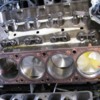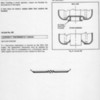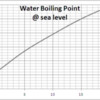I know I'm opening up a hornets nest here but I'm getting very frustrated. I have read every cooling post in the forum probably twice and there is a wealth of excellent information. I'm going to the well once more to see what I can find. My 1974 L was purchased a year ago february. The car had not run since 1986 however was mothballed very well. The rad was shot so I put a new custom made "Wizard" double pass with twin spal sucker fans in. I have "burped" the car probably 8-10 times now both front and back. I've started it on the flat, waited 5 minutes, jacked it up, bled air out the rad, added coolant etc. etc. etc. I have gotten a fair bit of air out of the system. What happens each and every time is this. After I place the pressure cap back on, the car will idle for about 10 minutes with the temperature slowly inching up. I continue to check the rad hoses as it pauses around 190. They are cold. It inches up towards the first mark past 190 and the hoses are still cold. Eventually it gets to the first mark past 190, the hoses go stinking hot and the puke tank passess about a gallon of coolant all over the floor and I shut er off. I'm thinking now that I have a thermostat issue but I'm open to any and all suggestions. I've gone through this scenario probably 6 times now and it's gettin damn expensive for the coolant )) Oh wise and wonderful forum…what sayest thow….
)) Oh wise and wonderful forum…what sayest thow….
Original Post




